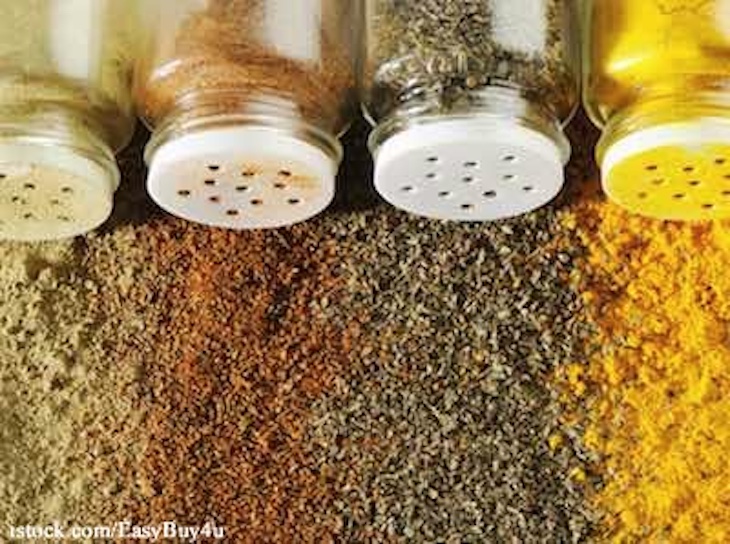We often talk about how to protect yourself against food poisoning in the kitchen. You know about preventing cross-contamination, and using a food thermometer, and washing your hands and utensils. But did you know that spice containers can be contaminated with pathogens? A study conducted at Rutgers and published in the Journal of Food Protection details this information.

Almost half of spice containers can be contaminated while working in the kitchen, according to the study. In the study, 48% of spice containers sampled showed evidence of cross-contamination during food preparation. In fact, those containers had the highest pathogen marker concentration of all kitchen surfaces, including trash can lids.
Observational studies and self-reporting shows that consumers often use risky food safety practices in the home. The most common mistakes are not washing hands correctly, using incorrect measures to determine the doneness of meat and poultry, cross-contaminating surfaces, using the same cutting board for meats and fresh produce, and not reading safe handling instructions.
The study was developed to discover the prevalence and degree of cross-contamination in a variety of kitchen surfaces during meal preparation that included a raw poultry product and a ready to eat vegetable salad. The study was conducted in a consumer test kitchen.
Participants were recruited from counties in North Carolina. Participants prepared a meal of raw ground turkey patties that were inoculated with a tracer organism MS2 and the salad. MS2 is used because it is not harmful to human health.
About half of the participants were shown a USDA food safety video on proper thermometer use; the other group received no education. The participants were not told their food safety behavior was being examined. In total, 323 metal preparation events were analyzed.
After the meal was prepared, 12 areas in the kitchens were swabbed, including utensils, cleaning areas, kitchen surfaces, and two discretionary samples. Those last samples were taken based on researcher observation during the meal preparation. The tracer organism was detected by reverse transcription quantitative PCR based on a previously adapted assay.
For most of the meal preparation events, two or fewer swabs showed cross-contamination evidence. But 81% of the time, one or more surfaces were positive for MS2.
The kitchen faucet had the lowest concentration of MS2. Spice containers had the highest concentration of MS2, closely followed by cutting boards. Cutting boards have long been considered problematic in kitchen cross-contamination.
The high concentration of MS2 on spice containers could have several explanations, including the close proximity to the area where the turkey patties were handled. Participants also did not wash their hands between handling the raw ground turkey and seasoning the patties. And the spice containers were handled many times during food preparation.
So when you are working in the kitchen, think about what you touch. Clean everything that may have been touched before you wash your hands, including spice containers, to help you stay safe.




